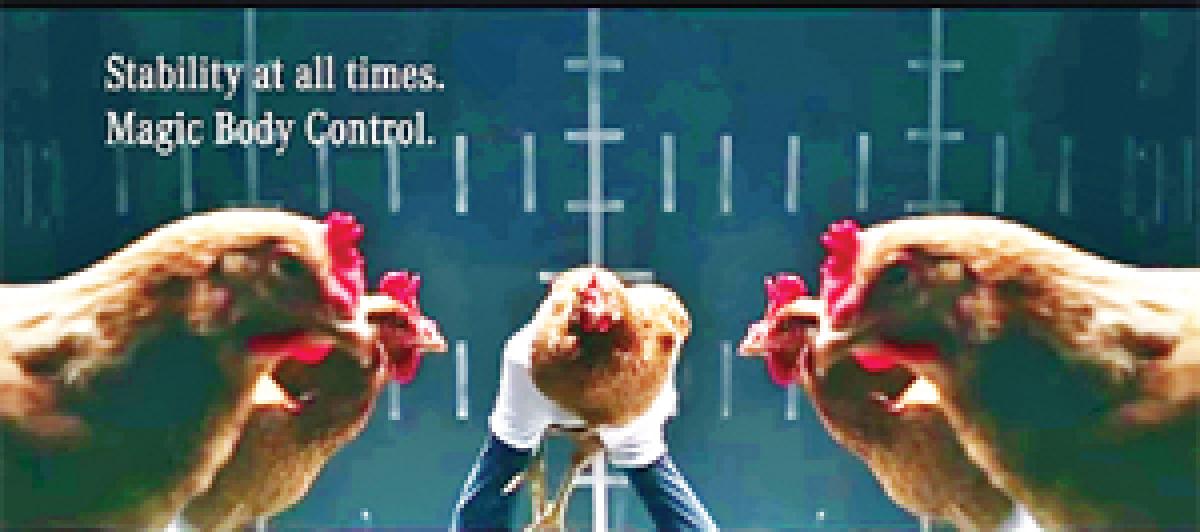Live
- Traffic diversions for ‘Vision’ meet
- YSRCP stir for MSP today
- Direct flights from Rajahmundry to major cities soon
- Search intensified for Gowtham Reddy as HC dismisses his bail plea
- Santosh Trophy final round to begin in Hyderabad tomorrow
- BGT: Rohit must return to opening for Brisbane Test, says Ponting
- Swimming sensation Havya steals the show
- NDTL gets WADA nod to manage Athlete Biological Passport
- BWF World Tour Finals: Treesa-Gayatri wins 2nd match to keep semis hopes alive
- Youngest ever to conquer chess world
Just In

The Science Of Persuasion. The world of advertising is like the daily sciences we study. Just like science has theories that contradict, advertising too has speculations that gainsay one another. The popular advertising theory by David Ogilvy states that it is good advertising that decides the fate of a product, irrespective of it being good or bad.
.jpg) The world of advertising is like the daily sciences we study. Just like science has theories that contradict, advertising too has speculations that gainsay one another. The popular advertising theory by David Ogilvy states that it is good advertising that decides the fate of a product, irrespective of it being good or bad. "If it doesn't sell, it's not creative," says David Ogilvy to quantise his theory. And, the theory is very much popular and followed by advertising agencies. But in today's world of product and service competition, it is the product that gives scope for better advertising. The Pink Cow theory justifies that it is a good product that gives space for good advertising and in turn create the necessary persuasion required to boost the sales.
The world of advertising is like the daily sciences we study. Just like science has theories that contradict, advertising too has speculations that gainsay one another. The popular advertising theory by David Ogilvy states that it is good advertising that decides the fate of a product, irrespective of it being good or bad. "If it doesn't sell, it's not creative," says David Ogilvy to quantise his theory. And, the theory is very much popular and followed by advertising agencies. But in today's world of product and service competition, it is the product that gives scope for better advertising. The Pink Cow theory justifies that it is a good product that gives space for good advertising and in turn create the necessary persuasion required to boost the sales.
The theory is simple, intelligible and comprehensive. It goes on to explain how a common man wouldn't react in an unusual way by seeing an ordinary cow, but on seeing a pink cow, would rather click a picture of it and make it viral on the social media. It explains how the pink cow would not be unique when many such species start showing up; thereby hinting at how the best time to advertise is when a product is new.
A characteristic example of this is the advertisement by Mercedes Benz, when it first launched the Magic Body Control Technology. Until then, it was the only brand to come up with the technology among other automakers. Mercedes like most of its ads, didn't show its cars depicting the Intelligent Drive feature; perhaps, it used a hen's neck stability to compare it to that of the automobile. The ad went on to show how a hen's neck remains stable despite the movement of its body, just like the Mercedes' driving position steadiness while driving on uneven roads. There is no doubting that the ad was brilliantly put across, making the brand's point very firm just as the technology. The ad was that popular because of the scope the quality technology by Mercedes gave it. Here, the Magic Body Control was the pink cow.
Before you get convinced by the Pink Cow theory, have a look at a fitting ad by Jaguar to Mercedes. Jaguar is known for its hard suspensions and the jerks it gives. So, as a reply to the Magic Body Control ad by the German automaker, Jaguar took to ad war and proved that David Ogilvy was right in his theories. The first half of the ad by Jaguar was similar to that of Mercedes, except for the fact that it was a wider shot, showing the engineers struggling to move so as to keep the hen stable, The latter half shows the tired engineer trying to put the hen aside, as he listens to its last scream and sees its feather remains. The camera pans to show that the rooster was eaten away by a Jaguar, followed by caption- 'Magic Body Control? We prefer cat-like reflexes'. With this ad, Jaguar has proved that there may be theories that explain when and what to advertise, but it is the right wit that works while advertising.
Tushar Kalawatia

© 2024 Hyderabad Media House Limited/The Hans India. All rights reserved. Powered by hocalwire.com







